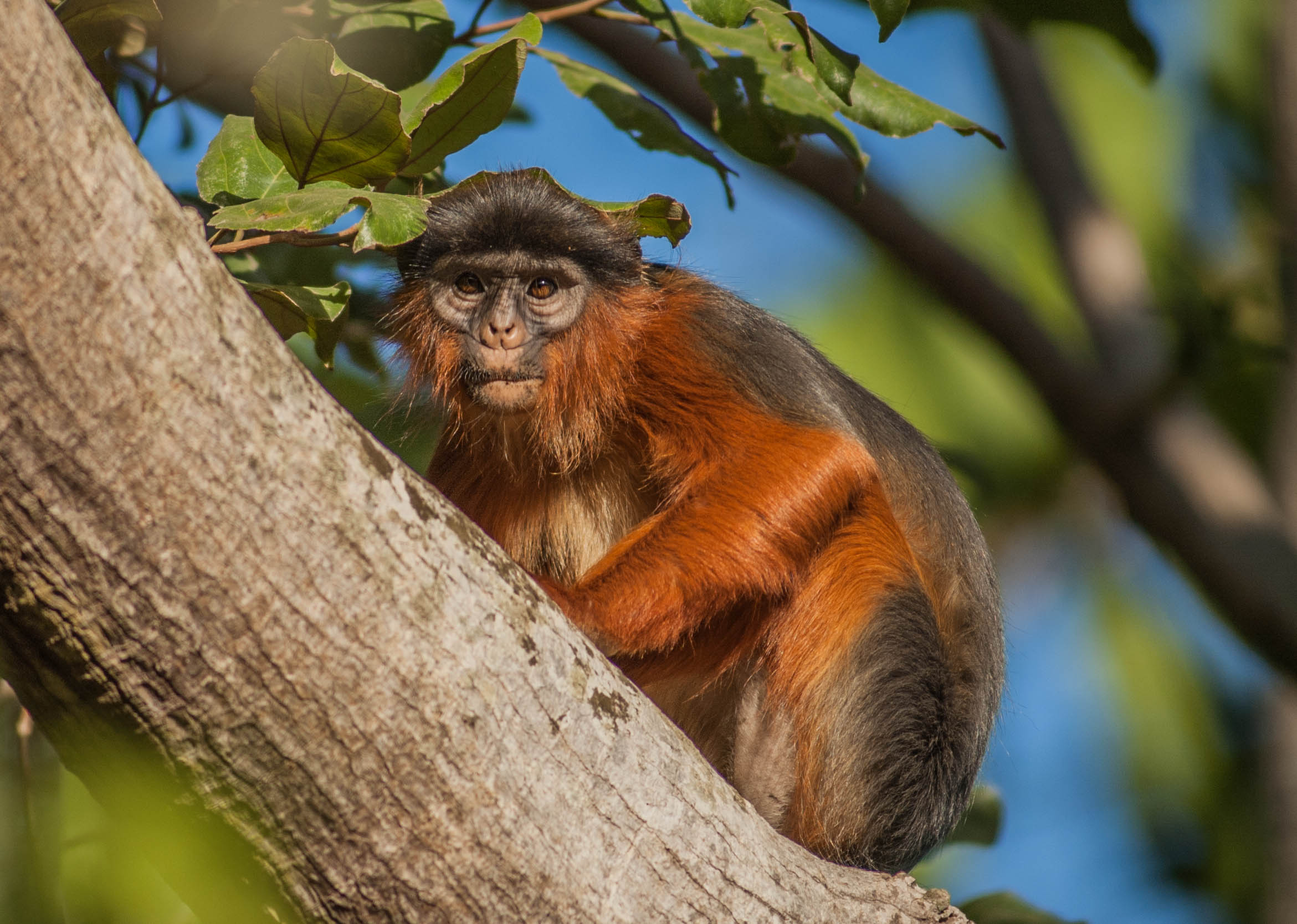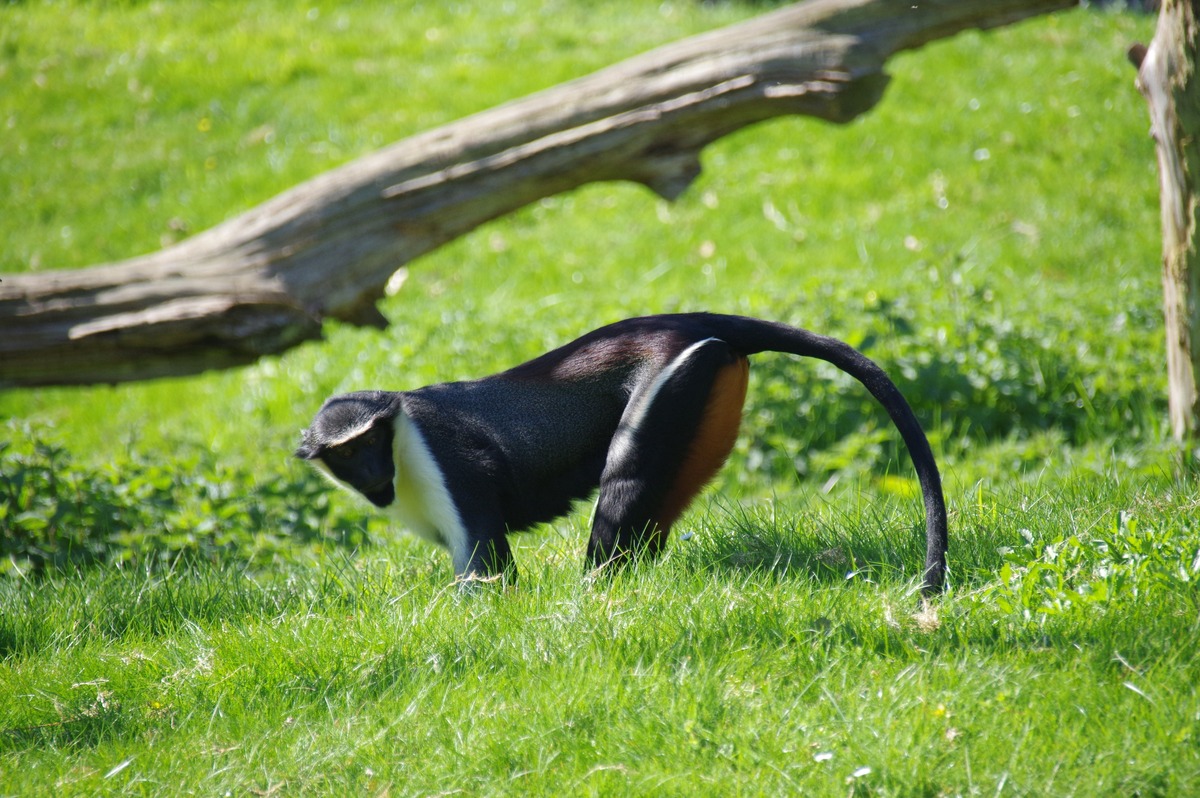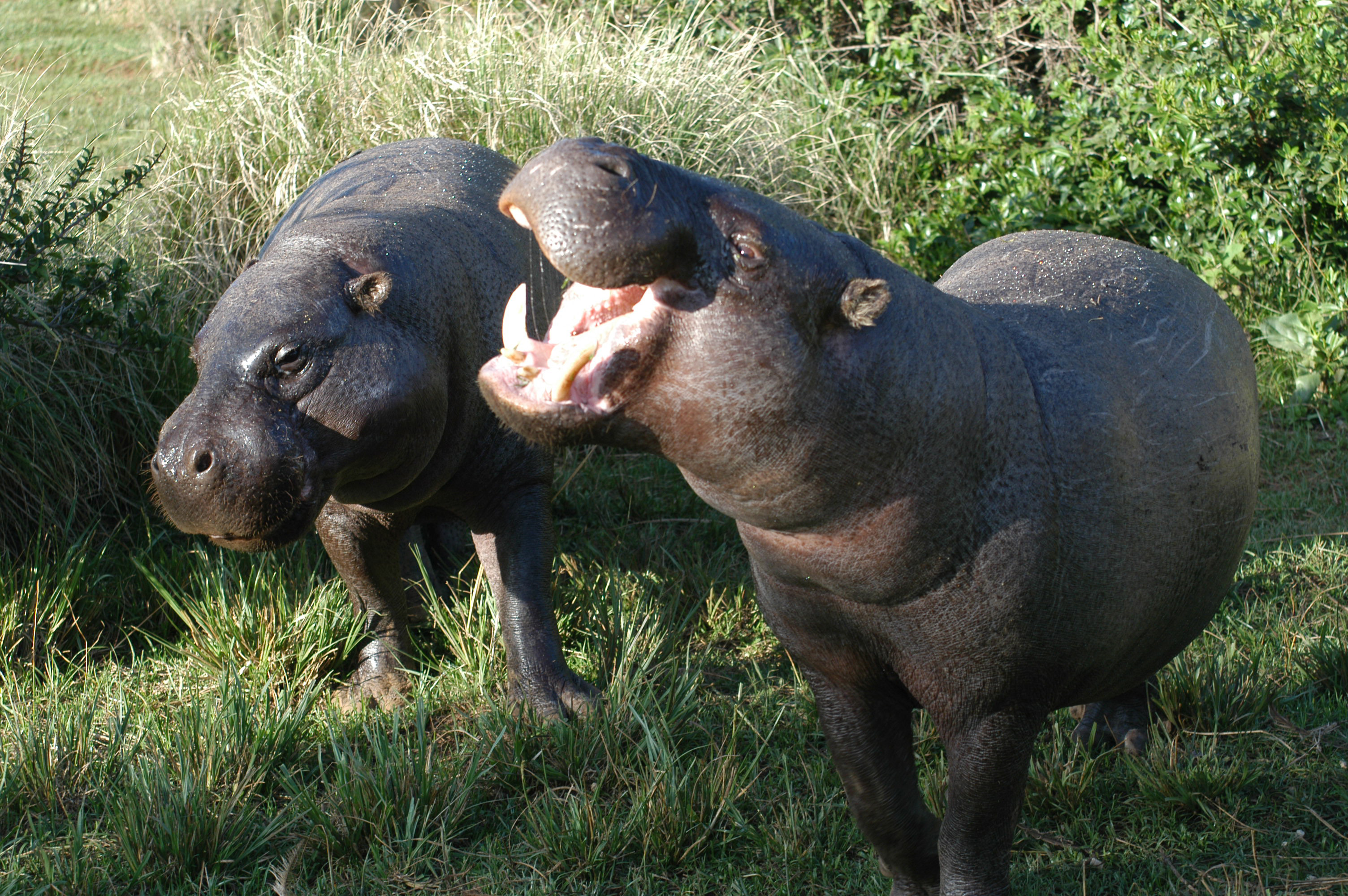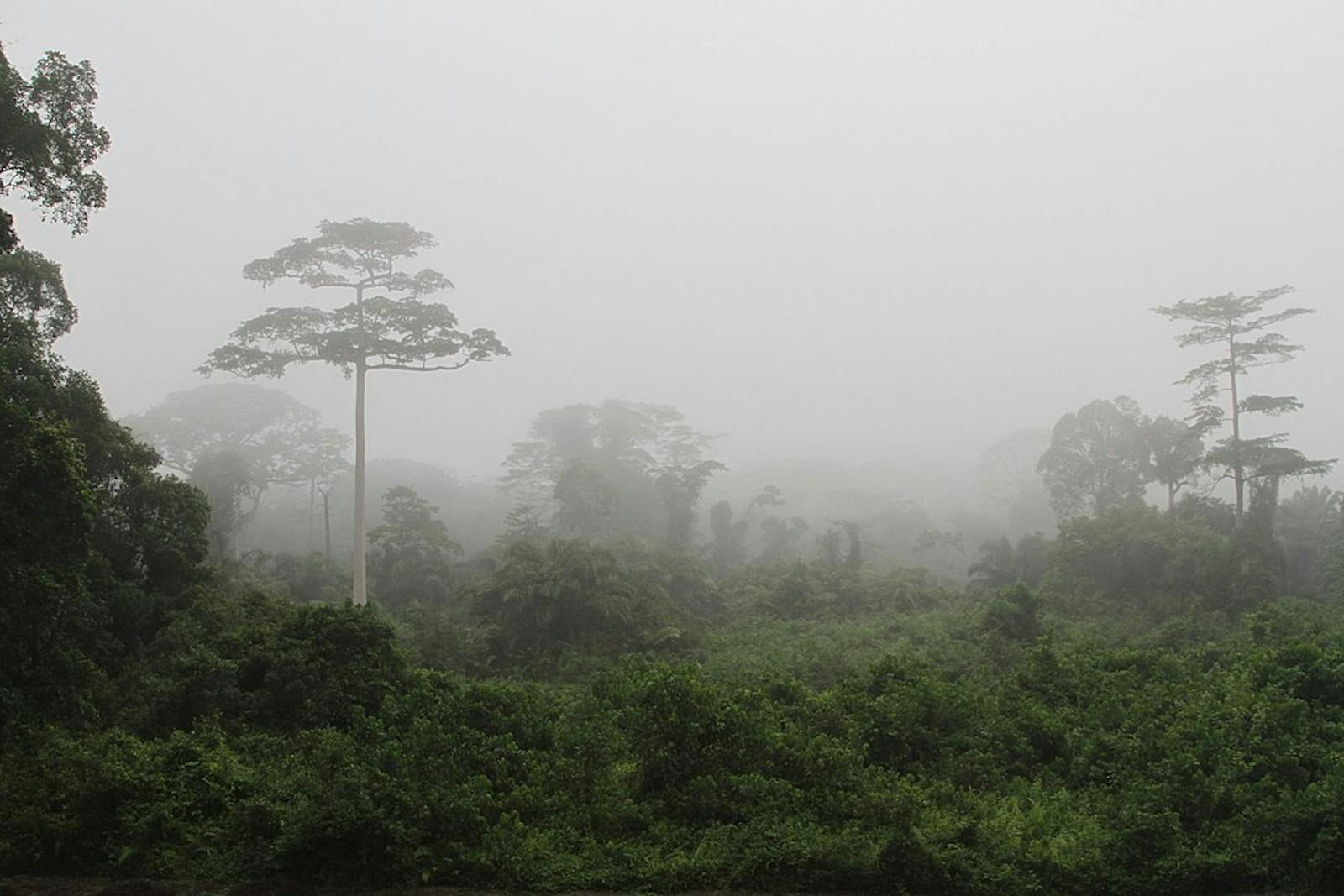Western Guinean Lowland Forests
The ecoregion’s land area is provided in units of 1,000 hectares. The conservation target is the Global Safety Net (GSN1) area for the given ecoregion. The protection level indicates the percentage of the GSN goal that is currently protected on a scale of 0-10. N/A means data is not available at this time.
Bioregion: West African Coastal Forests & Savanna (AT19)
Realm: Afrotropics
Ecoregion Size (1000 ha):
20,556
Ecoregion ID:
30
Conservation Target:
34%
Protection Level:
4
States: Côte d’Ivoire, Guinea, Liberia and Sierra Leone
The Western Guinean Lowland Forests ecoregion extends across four African countries and is inhabited by an impressive variety of species, many of which are strictly endemic. This includes Merlin’s clawed frog, known only from Guinea and Sierra Leone, and the Freetown long-fingered frog, which has only been found in the mountains close to Freetown, Sierra Leone. The forests are also a habitat for the endangered pygmy hippopotamus and the white-necked rockfowl, which, thanks to its almost cartoonish appearance, is one of the most desired birds in Africa by bird-watchers, and is a flagship species for conservation.

The flagship species of the Western Guinean Lowland Forests ecoregion is the white-necked rockfowl. Image credit: Courtesy of Michael Andersen, Flickr
The ecoregion stretches from eastern Guinea, across Sierra Leone and Liberia, to the Sassandra River in south western Côte d’Ivoire. The river is a biogeographical boundary for primates, duikers, amphibians and lizards between this ecoregion and the adjacent Eastern Guinean Forests ecoregion. The topography is flat to undulating with an altitude ranging between 50 and 500 m, although there are a few isolated mountains of higher elevation. Several major rivers cross the ecoregion, including the Sewa, Mano, St. Paul, and Cavally. The soils are generally poor and heavily leached, except along river valleys and within inland swamps.
The ecoregion covers one of the wettest parts of West Africa—seasonal rains average 3,300 mm per year with Freetown Peninsula receiving an annual rainfall of more than 5,000 mm. Rainfall peaks in July and the dry season lasts from November through to April. Temperatures range between 30 and 33 °C during the hot season and 12 and 21°C during the cold season when the Harmattan winds blow south from the Sahara Desert.

Western red colobus monkey. Image credit: Creative Commons
The warm and humid climate has permitted the development of rainforest vegetation. Moist evergreen forests are found in the wetter areas, and moist semi-deciduous forests further inland. Swamp and riparian forests are embedded in the other forest types. ‘Farmbush’, the secondary growth derived from forest that follows slash-and-burn agriculture, is increasingly the dominant vegetation type in this ecoregion.
The forests are highly diverse and support well over 3,000 plant species, at least 200 of which are endemic. This includes the endemic liana family Dioncophyllaceae, which contains three single-species genera of lianas. The ecoregion is also a habitat for many other endemic species such as two duikers, Jentink’s duiker and zebra duiker, as well as two species of carnivore – the Liberian mongoose and Johnston’s genet.
Endemic bird species are the Liberian greenbul and Gola malimbe. Other notable endemics include the Tai River frog, Liberian long-fingered frog, and Ivory Coast toad. The reptile fauna includes three strictly endemic species: Los Archipelago worm lizard, Benson’s mabuya, and Liberia worm snake. Other threatened species include the Western chimpanzee, forest elephant, and pygmy hippopotamus.

Diana monkey. Image credit: Creative Commons
Human impacts on the vegetation have been severe and prolonged with the greatest level of forest fragmentation and loss in Côte d’Ivoire and Sierra Leone, whereas Liberia still retains large forest blocks. High forest is most intact within national parks and forest reserves, even though civil wars have prevented management in some areas. The largest protected area is Taï Forest National Park in Côte d’Ivoire, at over 3,300 km2.
In Liberia, Sapo National Park (1,292 km2) protects parts of this habitat, together with the trans-boundary Gola National Park which previously only included forest in Sierra Leone and now includes an additional 880 km2 of Liberia’s forest. Guinea appears to lack any protected forests within the ecoregion; an important unprotected forest (approximately 50 km2) remains on the Kounounkan massif, southeast of Conakry in Guinea.
The recent civil conflicts in Sierra Leone and Liberia led to uncontrolled logging, mining, and bushmeat hunting. Commercial timber extraction and charcoal production were previously large problems in the forests, however, in recent years there has been a decline in this industry. Another major threat to the forests has been the clearance of land for agriculture including palm oil and rubber. Mining of bauxite and titanium dioxide (rutile) in the southeast of Sierra Leone has resulted in forest loss, with the subsequent dredging leaving large water bodies polluted with heavy metals.

Pygmy hippopotamus. Image credit: Creative Commons
The priority conservation actions for the next decade will be to: 1) develop and implement species action plans including for the pygmy hippopotamus, which requires nationwide surveys to estimate populations; 2) continue to strengthen the protection of forests by creating national parks and support local communities with sustainable uses for the forest; and 3) Improve law enforcement of national parks to prevent illegal logging, hunting and other destructive activities in the forests.
Citations
1. Critical Ecosystem Partnership Fund. 2015. Ecosystem Profile: Guinean Forests of West Africa Biodiversity Hotspot.
2. Cole, N.H.A. 1968. The Vegetation of Sierra Leone. Njala University College, Njala, Sierra Leone.
3. RSPB. 2018. Gola Forest National Park. [Online]. Available at: https://www.rspb.org.uk/join-and-donate/donate/appeals/impact/rainforest-guardians/gola-forest-national-park. [Accessed 03 January 2018].




